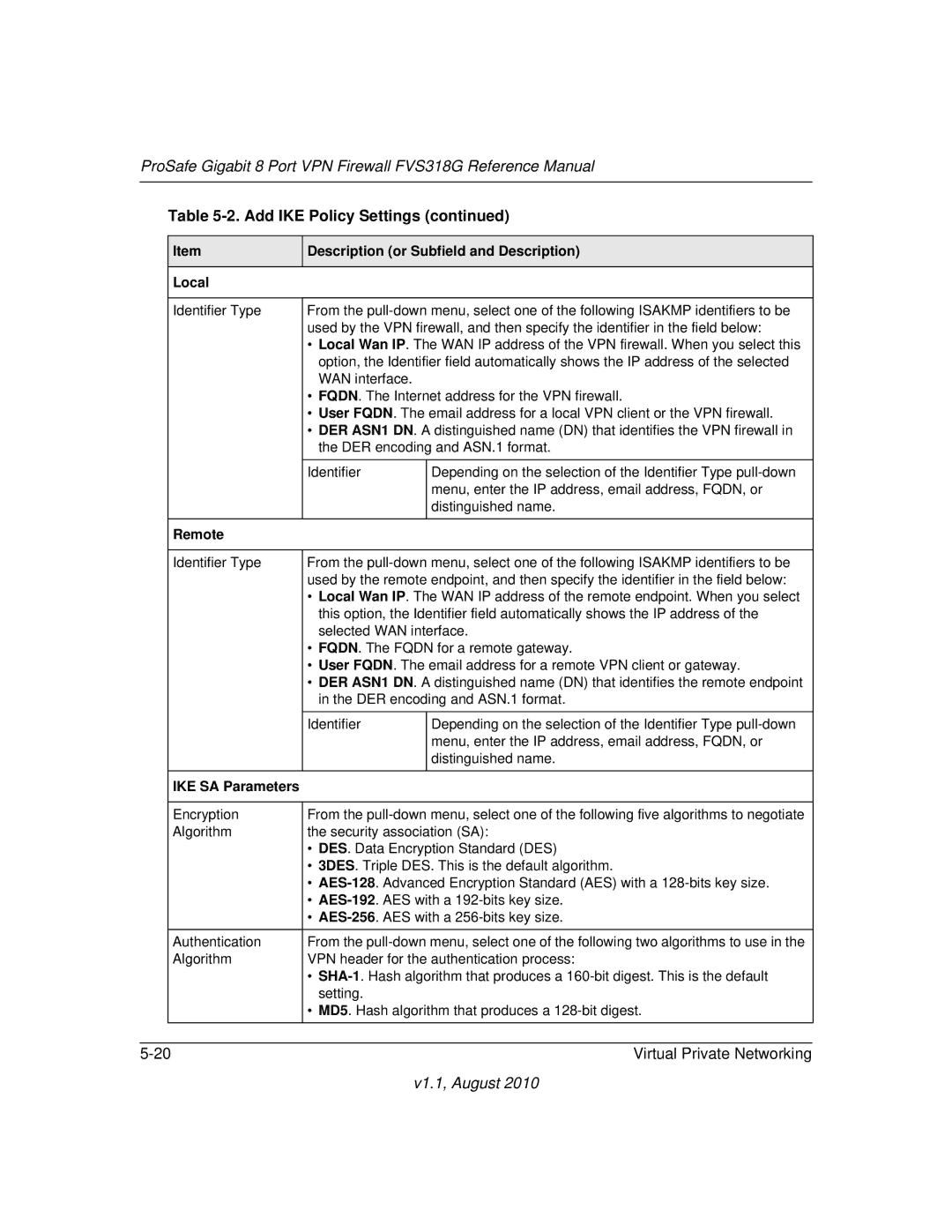
ProSafe Gigabit 8 Port VPN Firewall FVS318G Reference Manual
Table 5-2. Add IKE Policy Settings (continued)
| Item | Description (or Subfield and Description) | |
|
|
|
|
| Local |
|
|
|
|
|
|
| Identifier Type | From the | |
|
| used by the VPN firewall, and then specify the identifier in the field below: | |
|
| • Local Wan IP. The WAN IP address of the VPN firewall. When you select this | |
|
| option, the Identifier field automatically shows the IP address of the selected | |
|
| WAN interface. |
|
|
| • FQDN. The Internet address for the VPN firewall. | |
|
| • User FQDN. The email address for a local VPN client or the VPN firewall. | |
|
| • DER ASN1 DN. A distinguished name (DN) that identifies the VPN firewall in | |
|
| the DER encoding and ASN.1 format. | |
|
|
|
|
|
| Identifier | Depending on the selection of the Identifier Type |
|
|
| menu, enter the IP address, email address, FQDN, or |
|
|
| distinguished name. |
|
|
|
|
| Remote |
|
|
|
|
|
|
| Identifier Type | From the | |
|
| used by the remote endpoint, and then specify the identifier in the field below: | |
|
| • Local Wan IP. The WAN IP address of the remote endpoint. When you select | |
|
| this option, the Identifier field automatically shows the IP address of the | |
|
| selected WAN interface. | |
|
| • FQDN. The FQDN for a remote gateway. | |
|
| • User FQDN. The email address for a remote VPN client or gateway. | |
|
| • DER ASN1 DN. A distinguished name (DN) that identifies the remote endpoint | |
|
| in the DER encoding and ASN.1 format. | |
|
|
|
|
|
| Identifier | Depending on the selection of the Identifier Type |
|
|
| menu, enter the IP address, email address, FQDN, or |
|
|
| distinguished name. |
|
|
|
|
| IKE SA Parameters |
|
|
|
|
|
|
| Encryption | From the | |
| Algorithm | the security association (SA): | |
|
| • DES. Data Encryption Standard (DES) | |
|
| • 3DES. Triple DES. This is the default algorithm. | |
|
| • | |
|
| • | |
|
| • | |
| Authentication | From the | |
| Algorithm | VPN header for the authentication process: | |
|
| • | |
|
| setting. |
|
|
| • MD5. Hash algorithm that produces a | |
|
|
|
|
| Virtual Private Networking | ||
